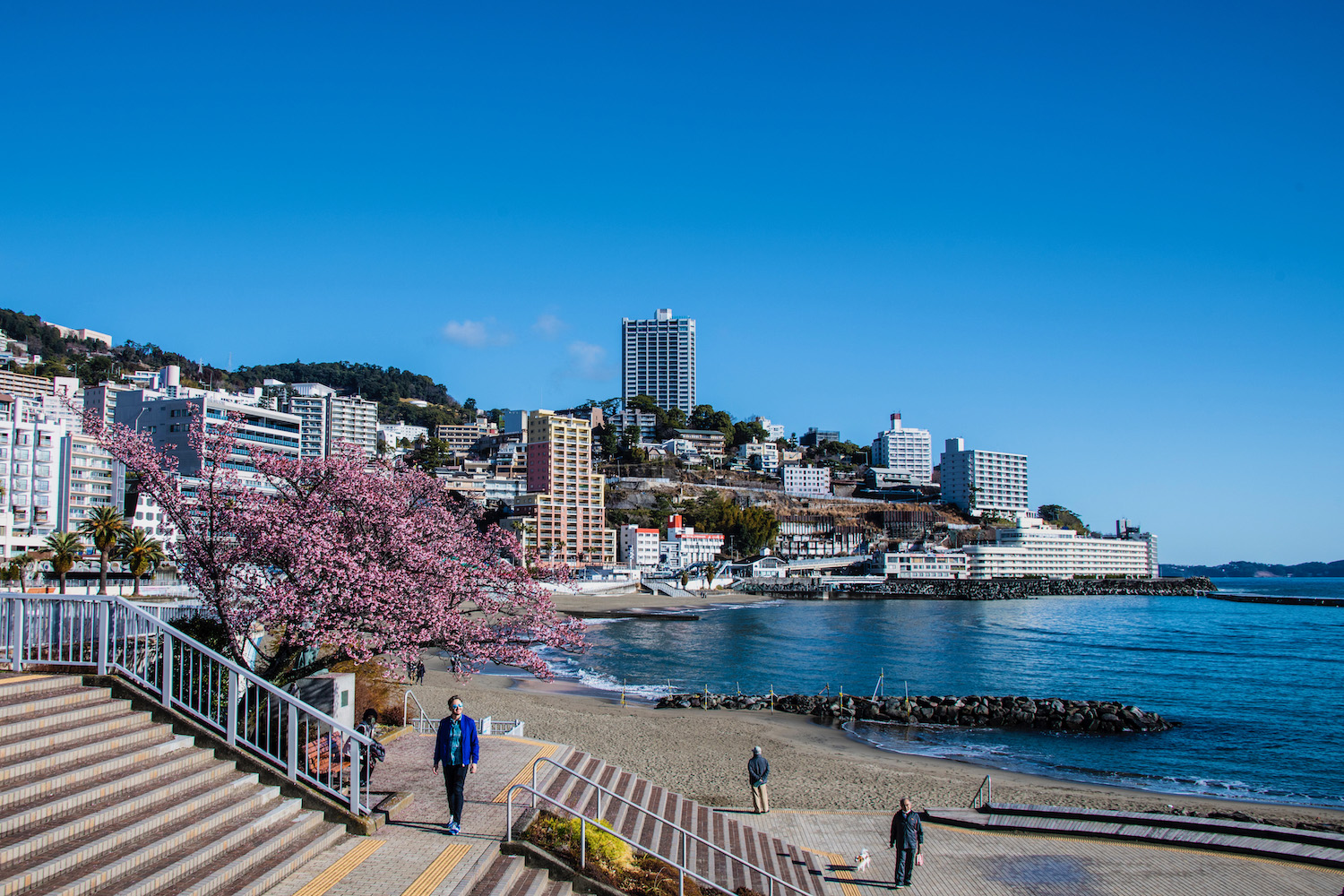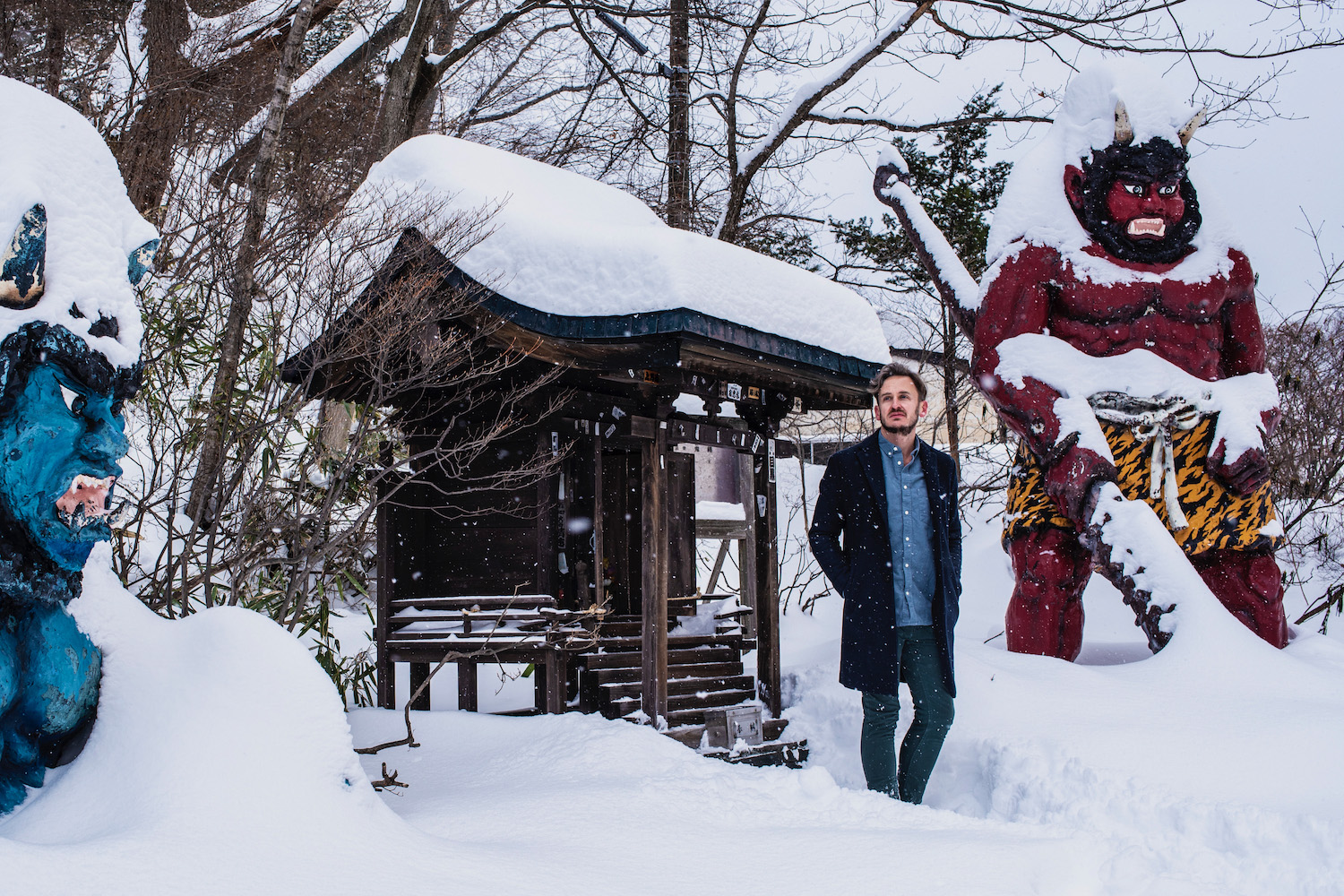Yukiguni means “snow country” in Japanese, but the first time I heard the phrase, it was so hot I could barely think straight.
It was the sort of heat the makes you second-guess yourself, like when the breeze rustles the willows but doesn’t cool your skin. Like when it’s just days before autumn and huge patches of the rice paddy have turned golden, but you still start sweating the moment you walk outside.
I was in Sakata on the Sea of Japan, not far (at least when using 2020s trains) from Niigata’s Yuzawa Onsen, where Yasunari Kawabata’s book of the same name (Snow Country, this is) takes place. The west coast of Honshu island, the tome’s intro explains, is the snowiest place in the world for its latitude.
That story begins with the protagonist, Shimamura, reaching his destination in the wake of a massive blizzard, seemingly against all odds (at least when using 1930s trains). This story begins with me, Schrader, unable to get to my destination as scheduled because of run-of-the-mill February snow and wind.
As I waited on hold with Japan Airlines so long I memorized their hold music, I felt annoyed, but I also couldn’t help but savor the irony. 90 years had passed, and given us the Airbus A350 I’d been scheduled to fly to Sapporo on, and I was having a harder time getting to the snow country than Shimamura-san had.
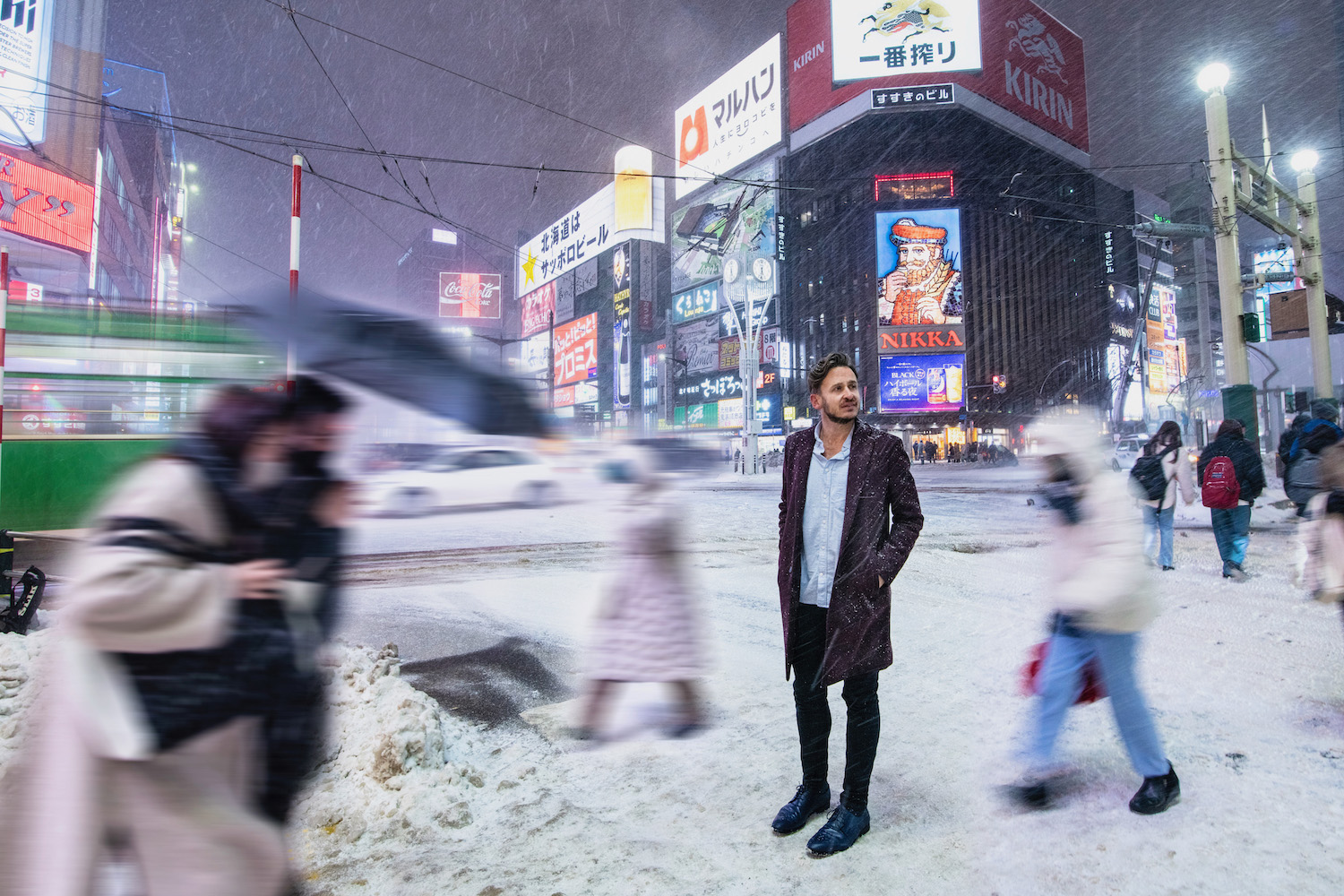
My rescheduled flight arrived at New Chitose Airport more or less as planned the next morning. A lot of other travelers, it seemed, had opted to delay their trips instead of canceling outright, at least judging by how tightly their bodies wedged me against the door of the rapid train into the city.
Looking out the window (at least when I could gain enough dexterity to wipe my condensed breath off it), I felt humbled: The snow banks along the tracks were at least 10, maybe even 20 feet high; their bulk was constantly tumbling back onto the tracks, debris the locomotive shot out its backside like a snowmobile as it ran over it at full speed. Perhaps there’s a limit to how much humans can tame winter.
At least in summer you can order a cocktail.
“Yuke-guni?” I asked, half-certainly, after tentatively entering the bar (which had seemed closed) that September afternoon, half-soaked after the mere 15 minute walk from Somaro tea house, where I’d just seen a Maiko performance.
No, I thought as the barman lifted his head, that’s the wrong name. “Yu-KI-guni.” I smiled confidently, like a toddler who pooped without his mother’s help for the first time.
The man smiled and hai’d affirmatively, then put on his mask. This struck me as odd, since he was the only other human being (apart from me) within the stained wooden furnishings of the space, which evoked somewhere in Europe or North America more than Japan, and not so much the 2020s, but the 1930s.
As I continued reading Kawabata’s book, I felt contemptuous toward Shimamura. His entire reason for being in the hot springs town had was to find the perfect young Geisha. Then, after going to considerable lengths, including pushing back violently at the older woman who ended up procuring one, he was unable to do the deed and sent her back.
Yet I also felt a strange empathy toward him, even though our circumstances couldn’t have been more different.
Deep in your heart, you’re laughing at me. As I tried in vain to snap a self portrait in front of the Sapporo TV Tower, and a surprise spray of blizzard-like snow squalls shot down through the otherwise clear air.
Like Shimamura, I was being too hard on myself. I’d been too hard on myself for eight years, since the last time I was in Hokkaido in winter. The entire reason I’m come back, after all, is because I’d been so deeply disappointed with the pictures I captured back then, with the shallowness of the story I managed to tell.
But after just 30 minutes out in the cold, snow notwithstanding, I remembered: It isn’t always possible to do your best when conditions are at their worst.
The cold here is different, though. It feels different when you touch something. Defeated, I fled into the bowels of Odori Station, and sat down at the first Japanese curry shop I could find. Even after the accumulated snow had melted out of my hair, only an inch-thick piece of fried pork smothered in spicy, brown gravy could truly warm me.
As I attempted to photograph my food, I noticed the lens fogging up—from the ambient heat of the restaurant, not the steam. It was like the opposite of water happens when you emerge into a tropical clime from an air-conditioned hotel room.
Life divorced from time. I remember this first day not in hours and in minutes, but in defeats and victories. My excursion to Otaru was a bust.
The fleeting blizzard from the afternoon blew at sustained gale force there. Its winds had knocked most of Otaru Canal’s famous icicles off their awnings. Not that I could really see it anyway: The wind was, at best, translucent. Winter weather, infinity; Humans (especially Robert), zero.
He called his work research, but it was actually free, uncontrolled fantasy. Once back in the city I made a beeline for Susukino, an iconic nightlife district whose essence I don’t think I’ve ever really managed to capture.
Somehow, however, the wind and snow and the inch of it that once again filled my part helped clarify me at least what I should be aiming for, even if a cursory review of my photos during dinner convinced me I’d probably have to come back another night and give it another stab.
To be sure, it wasn’t until was back near my hotel that I realized my new 100mm macro lens was actually better suited to photographing snowy, lit-up night scenes than either my 35mm prime, my 16-28mm wide-angle or my 28-300mm zoom.
It was early days, and this was almost nothing, but I felt I might’ve gotten something on the scoreboard.
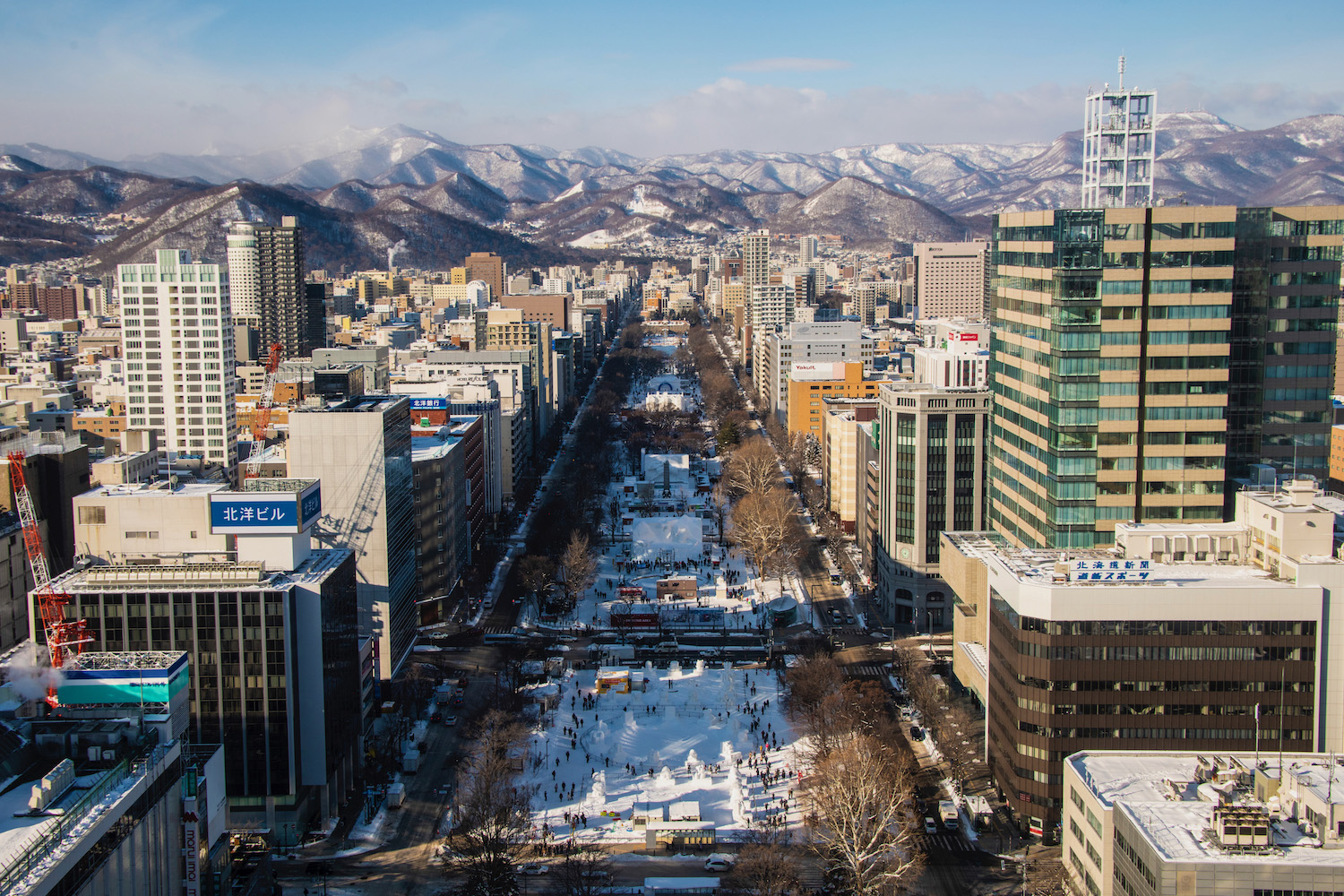
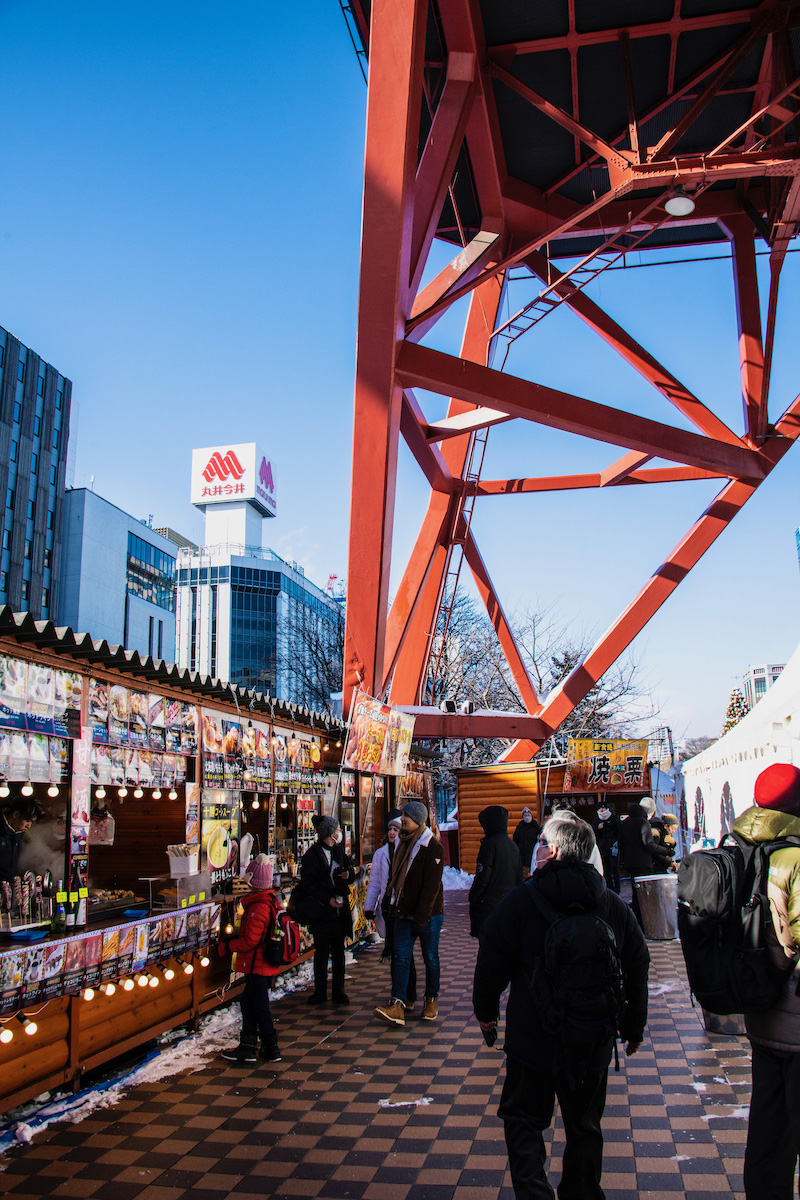
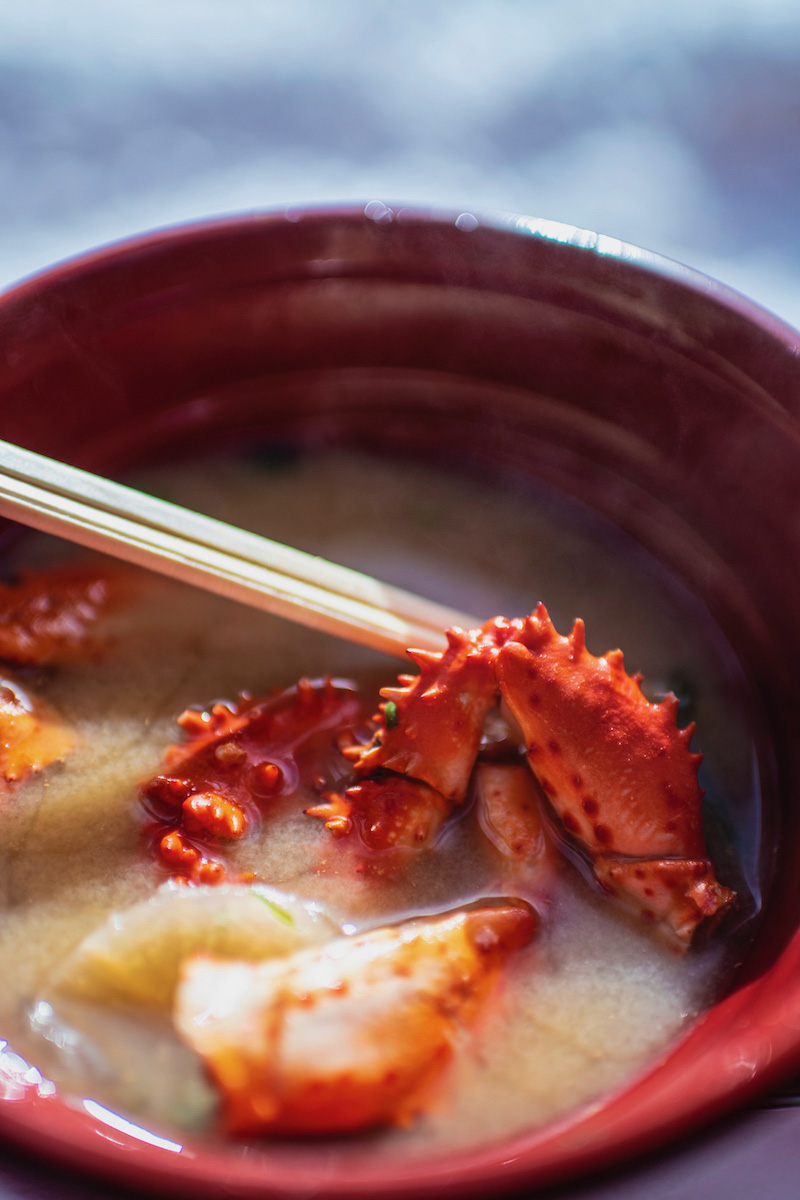
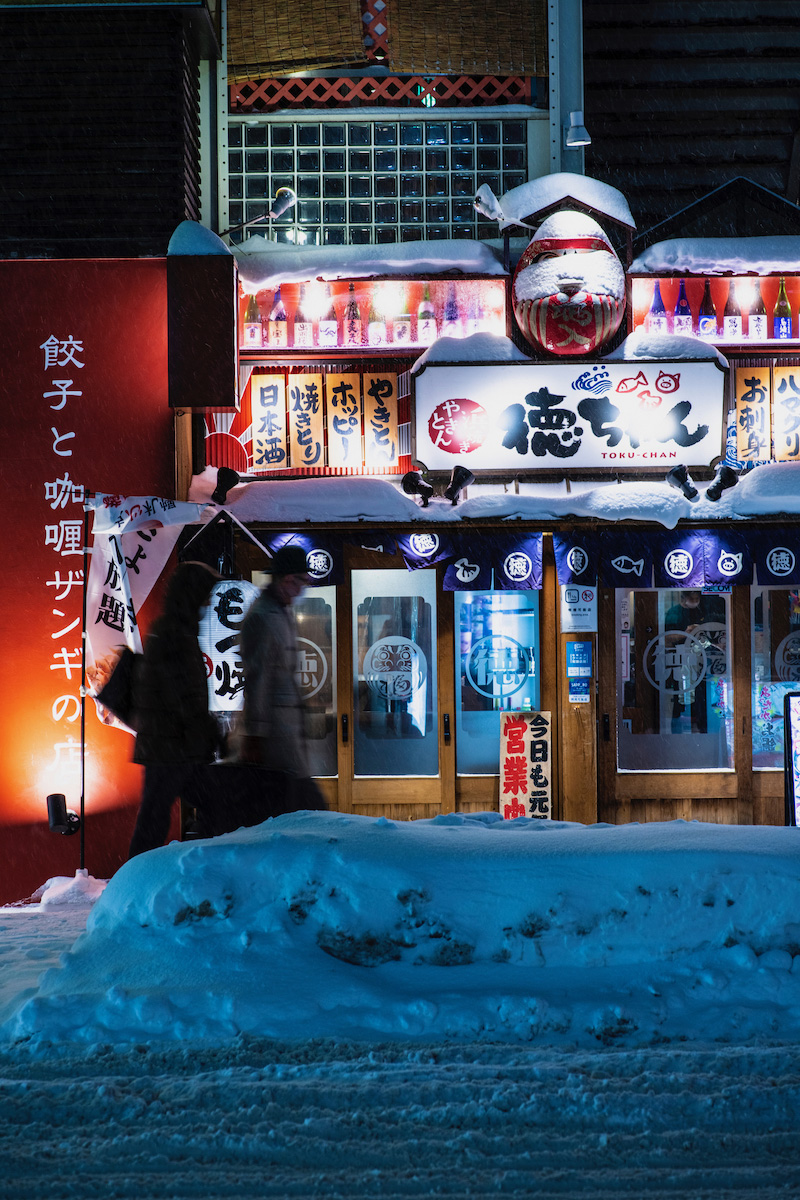
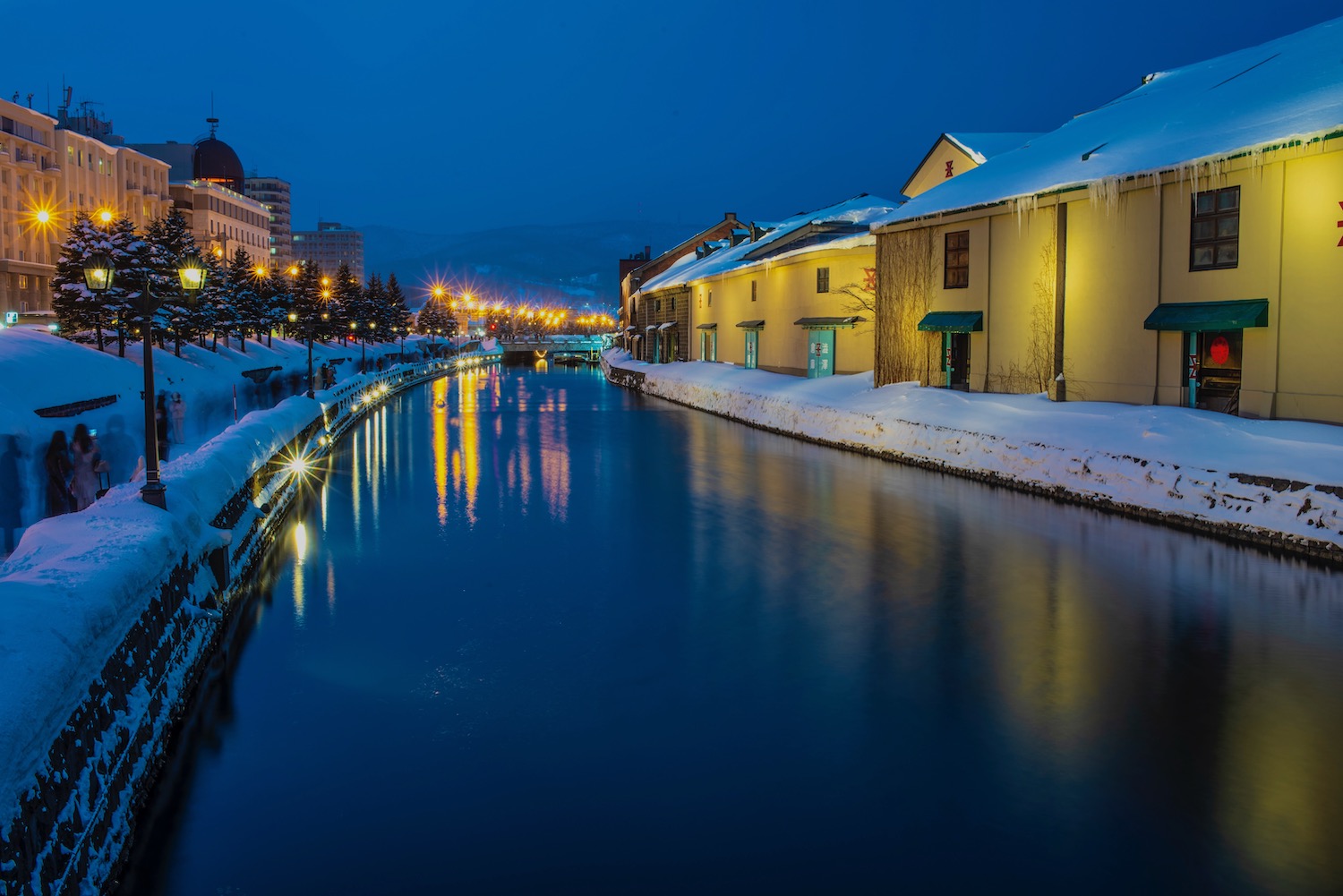
I couldn’t tell whether the yamikawaii girl in front of me in line at 7-Eleven well before dawn on my second morning in Sapporo was flirting with the cashier, or just giving him a hard time. Maybe she was flirting with him in order to give him a hard time. She was nonetheless out of place in this city—I took her presence as an auspicious sign.
Emerging back onto the sidewalk, I hurried back to my hotel to get ready for a day excursion. Well, as much as I could safely hurry: The previous day’s snowmelt had re-frozen, making the pavement freshly slick and extra treacherous.
Only when I was back in the warmth of my room at the Tokyu Stay did it dawn on me that I had failed to look up and try to spot the so-called “Green Comet.” Not that it was even certain to be visible amid the light pollution of such a large city. Still, it felt careless to be alive at the same time as a once-in-50,000-year event and not even try to participate in it.
Was it chartreuse or emerald? Not the comet, but the cocktail. I remember how green the liquid the bartender poured out of his shaker had been compared to the muted wood tones of the bar’s interior, and how fluorescent the maraschino cherry in the bottom of the small martini glass had seemed. But I can’t remember if the green had any yellow in it.
Which makes sense in a way. “It’s kind of a secret recipe,” I remember him saying in English, which shocked me—and not just because of someone in a place like Sakata being able to speak a language other than Japanese.
Given how un-talkative he’d seemed even up to that point, I expected my entire stay in the bar (called Köln, or at least the Germany city’s name written in katakana) to be as awkward as my entrance had been. He slid the glass to me.
I took a sip, then continued the conversation. “How long ago did you come up with it?”
“The recipe?” He seemed to chuckle.
I nodded.
“Oh, my dad came up with the drink,” he definitely laughed this time, which puzzled me given what he said next. “But he died last year.”
Later that morning in Noboribetsu Onsen where the awful, delightful scent of sulfur perfumes even the air several minutes outside of town, my impressions of Sapporo and its vicinity became as imprecise as my recollection of the cocktail’s color, as stream-of-consciousness as the conversation between Shimamura and Komako past the point he finally learns her Geisha name (they do reunite after his initial failure to launch).
This makes sense: Once you start enjoying yourself, details become less important than direction, execution less essential than emotion.
In my mind’s eye, for example, I might as well have flown on jets of steam from hellish Jigokudani to heavenly Otaru Canal, where the blizzard of the previous evening seemed like a bad memory, absent icicles notwithstanding.
Of course, had I flown in for my second attempt, I wouldn’t have been onboard a super-heated train passing the puzzling sight of surfers catching frigid waves. There’s no way their wetsuits alone kept them warm.
The next afternoon, having ascended Sapporo Tower that morning after traipsing through the Snow Festival (the first since 2020) just before it officially opened, it felt as if I had simply ziplined to the precipice of Mt. Moiwa. If I had, of course, I couldn’t have come down from the tower to savor crab soup, in whose miso broth the vermillion shells had sat for so long I could almost chew on them as I sucked their meat out.
I know I ate oden, as well. I especially remember the circumference of the daikon, and how it rose at least half an inch out of its soup. I remember how just a small dip of a chopstick into its companion mustard made me breathe clearer than I had in years, even if it was not enough to warm me as I emerged into Susukino again: I might as well have been frozen inside its ice sculptures, rather than admiring them as artists finished shaping them with chisels and blowtorches
I felt (and, I imagine, looked) like Komako when she and Shimamura awoke one morning to find the interior of their room as freezing as the snow-ensconced terrain outside. Your cheeks are flaming. That’s how cold it is.
As I shuffled to mount the camera on my tripod atop Moiwasan, whether I got their via zipline or a combination of tram and ropeway, the skin between my fingers was chapped and enflamed. A midi chime version of “The Rose” played loudly as the skyline lit up.
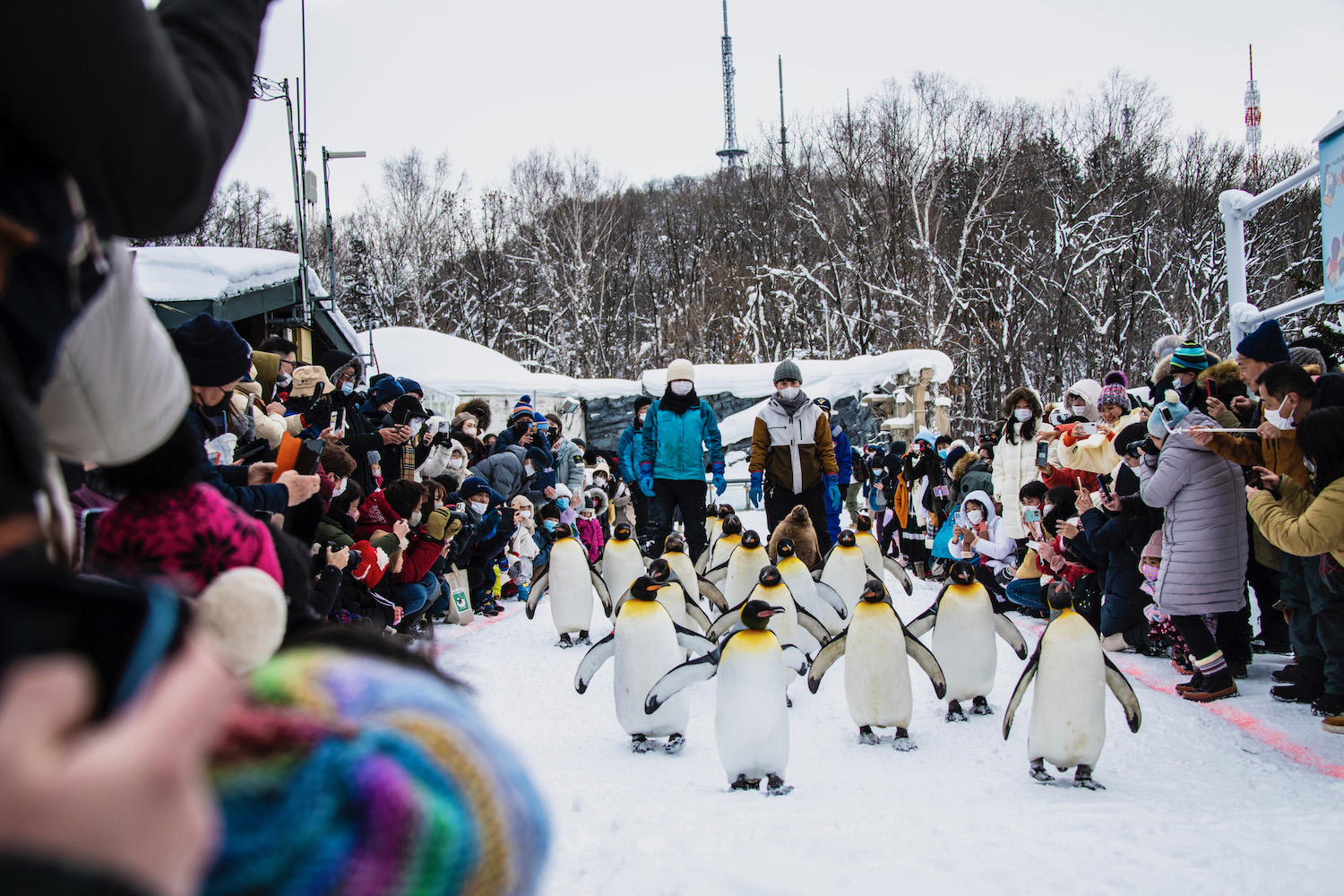
They’re doomed—Komako and Shimamura, this is. A Tokyo dilettante and his mountain mistress can’t be together, at least not in pre-war Japan; the resistance both put up because of this reality compounds it. It’s the dream afraid of waking, after all, that never takes the chance.
Looking in on their relationship nearly a century later (and knowing this) feels cruel, albeit not as cruel as riding a train called the “Lilac” to Japan’s coldest city during one of the coldest weeks of the year.
While the rising sun to the right of the train did briefly color the snows outside a creamy purple, their height—maybe six or even 10 feet, as least as high as the ones that seem to entrap Kawabata’s problematic Romeo and Juliet—canceled out any semblance of spring.
By the time my Sakata bartender had broken his awkward bit of news to me, I do remember I had more or less cooled down; I also remember it more or less killing the conversation that had only just begun. The cocktail itself was less than impressive: Too bitter for its bright color; too sweet to be made by such a man in such a venue. It was cheap, however, largely on account of the weak yen. I saw myself out.
As I picture the willow-lined avenue, which eventually led down to the city’s iconic rice storehouses, I wondered if their weeping skeletons would even be recognizable at this time of year, given how much snow would certainly have fallen by this point. Wouldn’t they simply have snapped off?
Certainly, this wasn’t a consideration in Asahikawa, where urban planners had simply planted pines along Chuo-dori Street. As I try to come up with something more about them to say than this, I’m reminded of the fact that a low-flying crow skimmed my scalp (though it thankfully failed to break the skin) just as I was admiring the attention paid to trussing up the branches of a particular tree.
Which was just as well: Although I felt moved by some of the details of the yokocho I happened upon—namely that many of its akachochin were literally filled with snow—the center of this city wasn’t what had drawn me here: I was bound for the Penguin Parade.
It ended up lasting all of two minutes, in spite of my having traveled nearly two hours each way (and waiting 30 minutes in the cold) to reach it.
Frozen deep into my marrow and with little desire to peer in on the zoo’s indoor exhibitions, I made my way to the large shelter near the exit, where to my surprise only a single other person was waiting. I took a spot directly in front of the heater, which called to mind the kotatsu Shimamura and Komako had taken to sharing as their lives became more enmeshed.
As the ice that had crystallized within my body vaporized out of my pores, one of the more poignant images from the middling middle chunk of the book entered my mind. The moon, Kawabata wrote, although it wasn’t clear whose perspective he’d been referencing, shone like a blade frozen in blue ice. This made me realize I still hadn’t seen the comet which, for all I knew, had already faded from view for another 50,000 years.
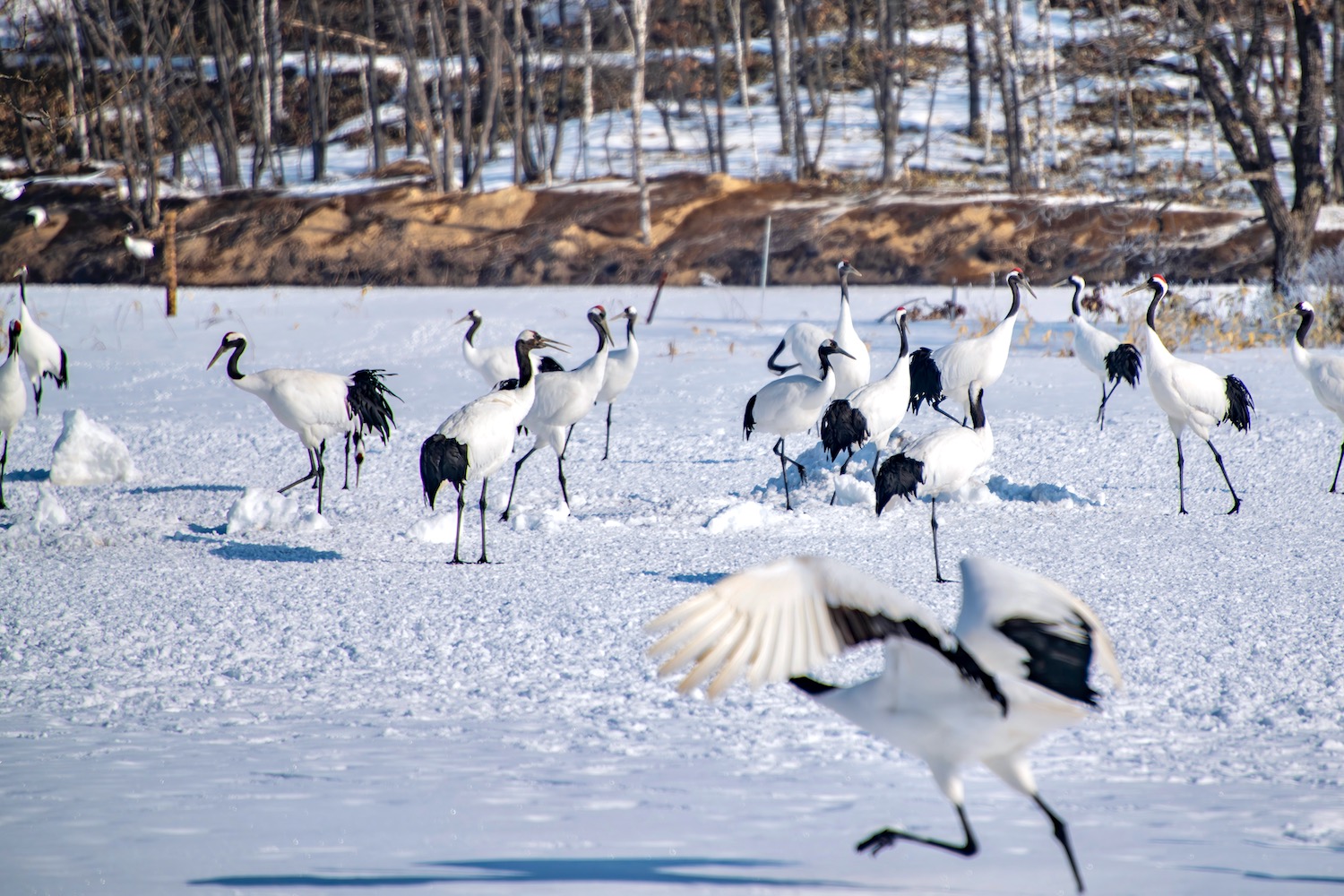
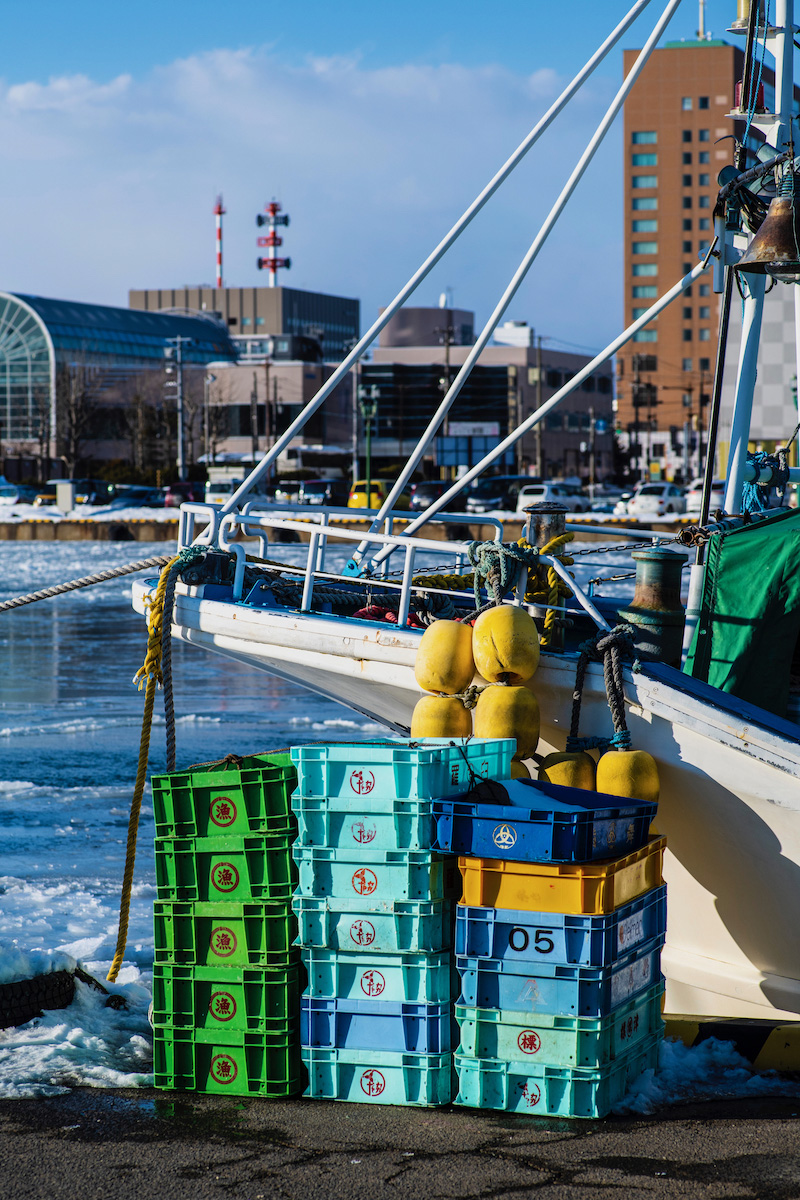
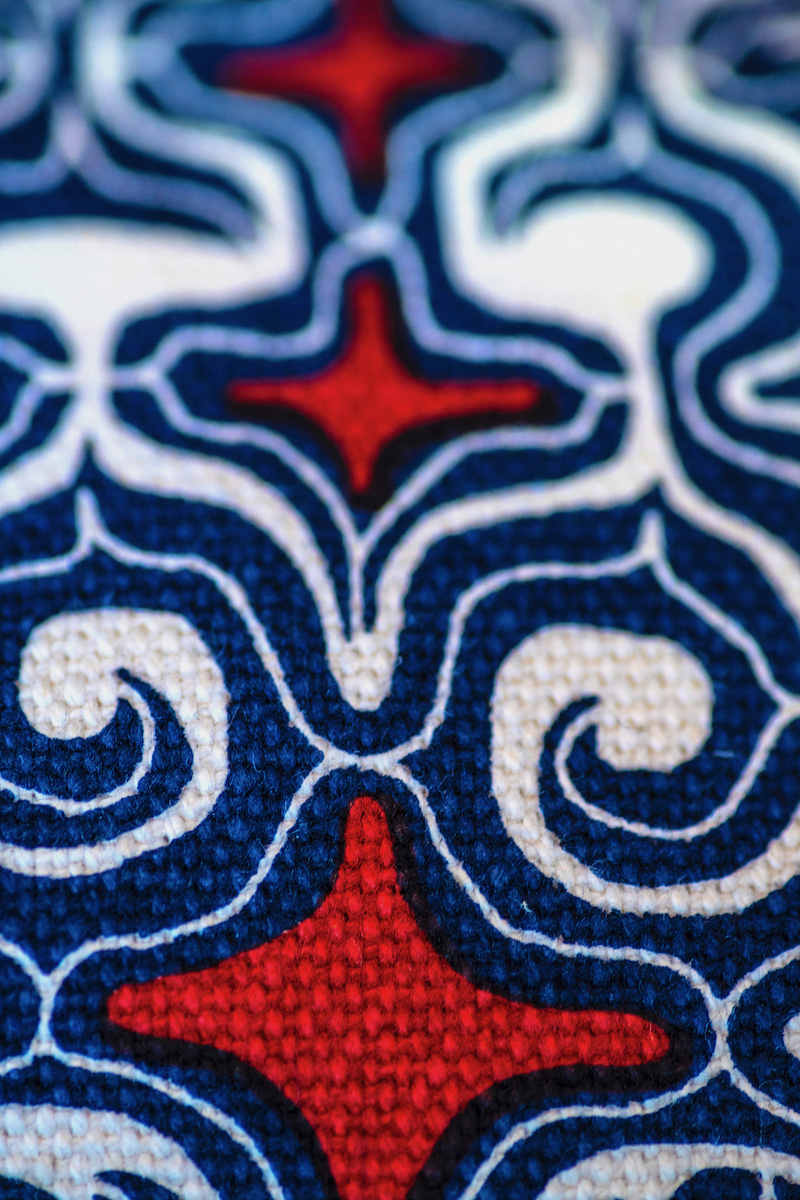
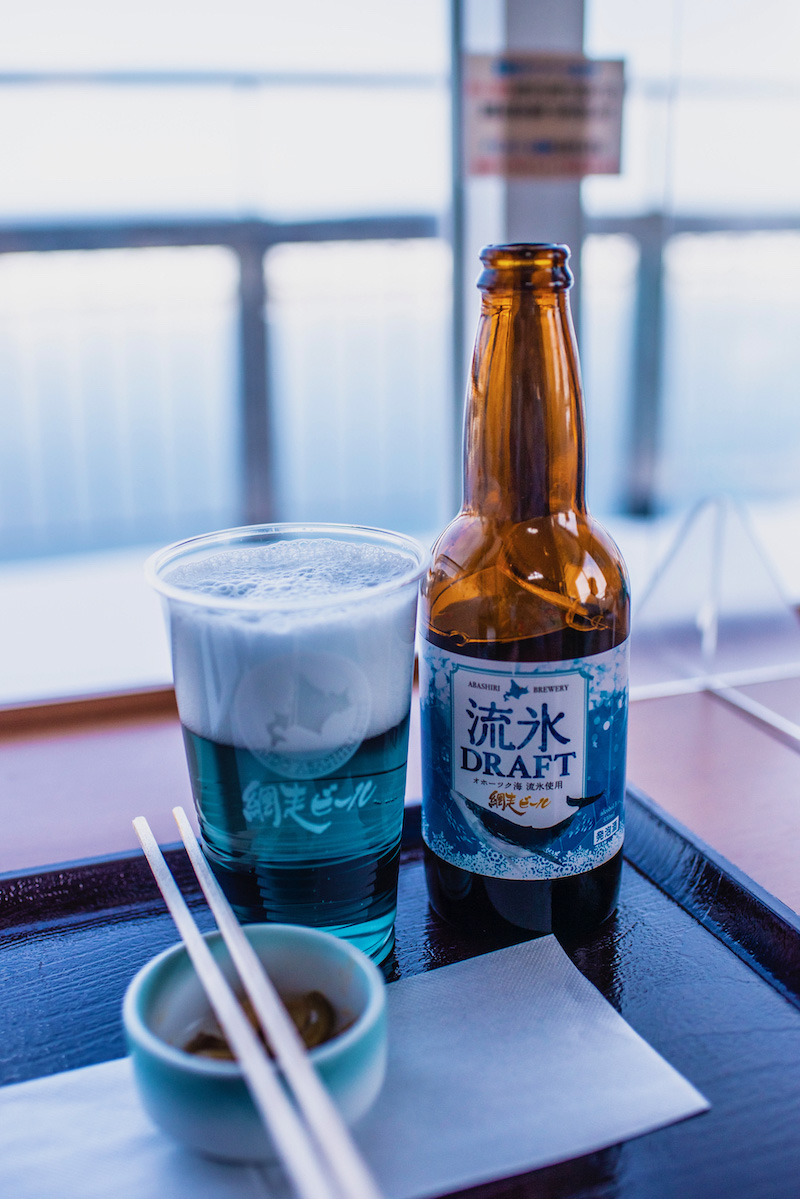

Dozens of seagulls stood atop the frozen Kushiro River just west of Nusamai Bridge, but I was fixated on the lucky one. It was feasting on a chunk of raw fish so sumptuous and pure it didn’t look so different from the sashimi bowl I’d just paid ¥2,000 to enjoy at nearby Washou Market.
In the sun, which was at most an hour from setting, the air felt warmer than it should’ve, given that all the cargo ships docked near me were all sutured to their moorings with ice. Where floes of liquid water managed to peak through the river’s otherwise solid surface, they took on the deep cobalt of the sky, which alongside the pastel colors of the plastic crates leaned against most of the boats suggested that spring was weeks, not months, away.
It was a perfect scene, at least until I heard the truck behind me. Reflexively, I moved my tripod out of the way, and scuttled as quickly as I safely could back toward my bag, which I’d propped up on a clean pile of powder snow.
To my surprise, its driver acknowledge me when he got out—in English, no less.
“I’m not driving any farther,” he reassured he, his maskless face (still, sadly, a rare sight in early 2023 Japan) smiling. “Don’t worry about me.”
With his blessing, I put my tripod back and resumed trying to perfectly capture the perfect scene, which I’d happened upon while exploring Kushiro’s city center somewhat without purpose. Easter, I thought to myself as I looked at the crates again, and how they complimented the sky. It looks like easter here.
The color palette before me certainly hadn’t evoked impending Valentine’s Day, nor the “Bird Chasing Festival” that was apparently all the rage in mid-February back when Kawabata wrote Snow Country.
When I’d checked in on Shimamura and Komako during the seemingly endless train journey inbound from Sapporo, the former had gone home to Tokyo, stayed with his wife for a good while and gone back up to the mountains for round two. Circumstances had changed, but their destinies hadn’t.
“Why have you come here?” She’d asked him upon his return, even though part of her was no doubt happen he’d come back. “Why have you come to a place like this?”
I supposed the fisherman, who introduced himself as Shinjiro when he engaged me, would say something in that vein to me, assuming his English was as good as it had appeared to be during our first interaction.
Instead, he told me a brief version of his life story. Starting in 1985—the year I was born—he’d traveled around the world selling commercial fishing boats and equipment. After a dozen or so trips, he’d hit every port from Alaska, down the coast of California and around the southern tip of South America, then up much of the Atlantic to New England and eventually over to Scotland and Norway.
“But that was years ago,” he sighed, with gratitude more than regret. “I don’t travel anymore.”
I didn’t say anything of substance in response, although his expression as I answered in platitudes and pleasantries was knowing.
As had been the case in Asahikawa, I was in Kushiro primarily because of attractions and experiences on its periphery. Primarily to see the tancho (red-crested Japanese cranes) that make their homes in the frozen marshes just north of the city; and secondarily because of the various Ainu settlements built up near the trio of lakes just north of the marshes.
Having been talked out of renting a car in Hokkaido in winter by well-meaning (but, as it turns out, misinformed) Japanese friends, I spent the next day on a quasi-organized bus tour. While it allowed me to tick everything off my list (notably, but not exclusively, the tancho), it did feel much too easy for what a wild part of Japan this is.
When the bus pulled up to the rest stop build across from Tsurumidai, the crane viewing spot, the birds were mostly just standing around, unbothered by the dozens of humans admiring them. This wasn’t a zoo, and they weren’t monkeys.
It was without warning, to be sure, that one cocked his head back and shrieked toward the sky, inspiring at least half a dozen of his peers to join him within mere seconds. This led (chronologically—I can’t say for sure that it was causative) to several of the birds seeming to dance with one another, which apparently means they’ve found a mate.
As a human this seems strange, both because we (at least those of us not named Shimamura and Komako) tend not to find love to be so simply, never mind that fact that the each bird would take off (often without its dance partner) shortly after the proverbial tancho no tango concluded.
As the rest of the day passed, two main trains of thought guided my consciousness. First, how strange it seemed that I didn’t see a single other crane anywhere else. While it made sense that they weren’t at Sunayu Onsen, given the large population of swans there, I was surprised not to have seen any neither as I looked down on Lake Mashu, nor as I walked through the Ainu village on the shores of Lake Akan.
The other was fear. While today was an aberration for how I’ve traveled most of my life so far, there was of course a future where bus tours and—gasp—maybe even European river cruises could become my means of seeing a place, a rubicon that when crossed could only possibly lead to one eventuality.
I don’t travel anymore, I imagined myself saying to some young man in 30 or 40 years, as he explores whatever place I happen to call home then. I wondered if I’d sigh with gratitude more than regret.
Would I look back more fondly on my heavily choreographed trip to see the cranes as they did their dance, or on my haphazard meeting with Shinjiro, whom I never would’ve encountered if I’d stayed on Kushiro’s tourist trail?
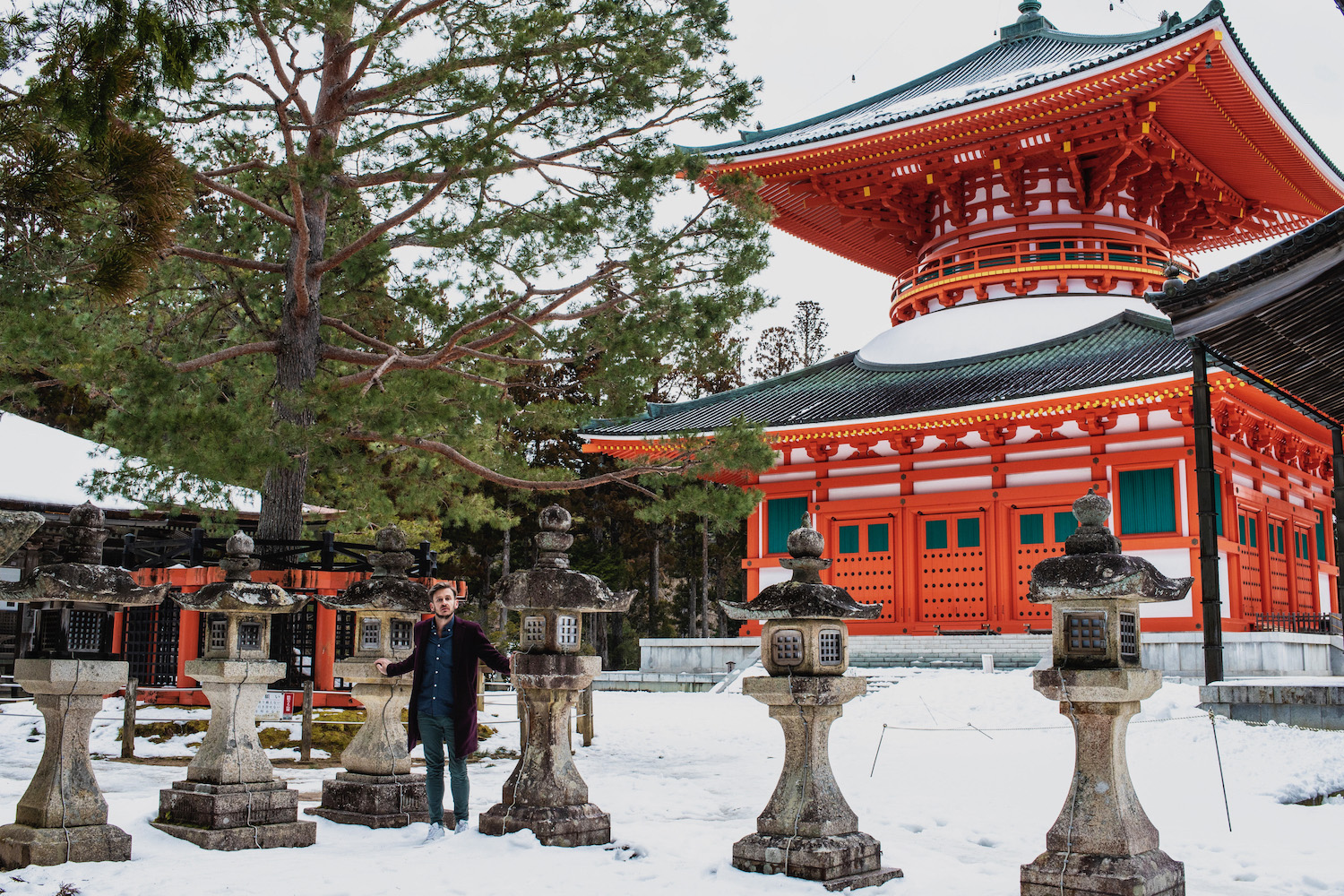
At Sankyo-Soko Rice Storehouses on my last evening in Sakata last September, I didn’t imagine the towering Zeklova trees I strolled past buckling under the weight of snow. I simply I wished I could stay another month and see them as golden as many of the rice fields I’d passed earlier that day had been.
In spite of still having a buzz from a drink called the yukiguni, seeing Japan’s snow country during its namesake time of year was the farthest thing from my mind.
Yet as I boarded the strange single-car Semmo Line train at Kushiro Station before dawn, I couldn’t help but wonder how Sakata’s infrastructure (which was extremely modern by comparison) might be holding up.
Certainly, when I arrived to Abashiri three hours later after passing through Hokkaido’s frozen interior, the notification I received made me second-guess my decision to skip a second swing through the city—Sakata, this is—on this particular swing through Japan.
I bet Sakata doesn’t have this problem, I sighed. I felt annoyed that Abashiri’s famous “drift ice” would be all but absent on my 11am icebreaker cruise, but relieved the town probably wouldn’t be as cold as Asahikawa or even Kushiro.
It was relatively warm when I headed out to the deck of the ship, which would still be sailing, albeit without a clear-cut purpose. So I took not a cup of hot coffee, but a mug of icy Abashiri beer, whose blue color is apparently natural, on account of the minerals in the melted drift ice it’s apparently brewed with. I didn’t pout about the lack of ice or even think of asking for a refund.
Certainly, in a town as small as Abashiri, I didn’t want to get a reputation. Komako had scolded Shimamura, to this end, one day as she walked through Yuzawa’s town center with him near the end of their love affair.
“You begin to have a bad name,” she explained to him, having noted that their secret tryst was no longer much of a secret to local people, “and you’re ruined in a little place like this.”
No, I saved my Karen-ing for Haneda Airport where, after having departed Abashiri with nearly an hour delay, I arrived just two minutes too late to make my connection to Osaka-Itami. It seemed, at least for a moment, that the entire rest of my trip would be spoiled.
I was ultimately bound for Koyasan, a destination I’d chosen to return to for a third time because I got a wild hair about seeing it during winter. The good news? As far as I could tell, there was still plenty of snow on the ground. The bad news? A warm rain sometime the next morning was expected to quickly melt all of it.
The worse news? The shukubo where I’d be sleeping told me I needed to check in before 5, timing that became impossible the moment my original flight to Osaka left without me.
I originally considered abandoning ship. Was it really worth it to travel halfway across Japan and to spend the night in a freezing cold temple, only to have an hour or two (or less—the forecast was always changing) amid the scenery that drew me there?
Shouldn’t I just admit that I was defeated by my own hubris? (Which, perhaps more than ANA’s failure to live up to the precedent it’s set for always being on time, was the reason my plans had suddenly crumbled.)
To my surprise, however, the monk manning Saizenin’s email account replied back in the affirmative, and told me it would vibe fine if I arrived around 6 instead of around 5.
Still, walking through the Danjo Garan Temple Complex just as it was lighting up for the night, I knew the snow it was dressed in would start disappearing in fewer than 12 hours. I couldn’t help but feel that I was chasing something already gone.
It was not entirely dissimilar from how Shimamura must’ve felt going back to Komako for a second time, knowing the moment he arrived that whatever he had with her was doomed to end.
Mt. Koya’s scenery, too, seemed to echo Kawabata’s prose, even if temperatures were so warm that a huge chunk of show slid off the roof of Konpon Daito pagoda, hitting the ground with such force that it sounded like a gong had been sounded, or maybe as if a bomb had gone off.
Gazing upward, I recalled one particular passage. The cedars, under a thin coating of snow, he’d illustrated the scene, rose sheer from the white ground to the sky, each cut off sharply from the rest.
As I looked away from the clear sky, where there was still no sign of the comet, I thought not only about how these evergreens might compare to the ones in Yuzawa, but whether any notable snowmelt was yet taking place in Sakata.
I started to entertain the notion that perhaps I hadn’t missed out by heading from Hokkaido to Wakayama instead of to Yamagata. I wondered whether the ghosts of the monks interred at nearby Okuno-in were swirling around within the clouds that were rolling in.
But then, another proverbial bomb went off, and I conceded a different point: It would be weeks before Sakata’s Zeklovas would succumb to even the tiniest of avalanches, though I did wonder how the now-bald willows would manage to do much good along the main drag near Köln.

The rush of the Takara River flowing through the ravine it cut over millennia. The bubbling of the onsen that has attracted humans here for centuries. The drip-dropping of rain (which would’ve been snow had it not been unseasonably warm) on the surface of the hot springs, which seemed viscous as my cold body waded through them.
It was an hour before dawn in the middle of nowhere, yet so much seemed to be happening, with one notable exception. Although this would’ve been my last, best chance to see the green comet, the clouds from which the rain was drip-dropping made sure that wasn’t going to happen.
For my part, I remained still once I found a flow that was hot enough to cancel out the air, which in spite of being warmer than it should’ve been still had a bite. I’d be flying in a few hours: After two weeks of calculation and execution, it was time to savor.
This place—which I’d last visited on the last day of my very first trip to Japan—certainly made that easy.
“Nine years,” the former manager (who now works as an ordinary staff member, I assume because of the limp he’s developed since our last meeting) exclaimed upon handing me the key to the Seishi room, which I realized only upon unlocking it was the same one I’d slept in way back then.
The nostalgia called to mind a passage where Komako recalls the period of her life when she first became a Geisha. “I have that written down,” she explained, matter-of-factly but not quite proudly. “On the very first page of my very oldest diary.”
Although I’d finished reading a couple days earlier—spoiler alert: they don’t end up together—the book was on my mind as I’d rolled into Jomo-Kogen, the closest Shinkansen station to Takaragawa Onsen. The next stop, according to the announcement that was played just as I got off, was Echigo-Yuzawa.
Even if it hadn’t been as warm as it is—at the lower altitudes where trains run, there’s hardly any snow at all—snow wouldn’t have been a match for the sleek Toki bullet train. Or maybe it would’ve: Even the Airbus A350 had been no match for the blizzard bearing down on Hokkaido earlier during my trip.
I’d learned the couple’s fate the day before in Shizuoka, where temperatures had been downright springlike.
Temperatures, and scenery: Here, particularly in the oceanside town of Atami (which itself was once a major hot springs destination), curious kawazu cherry trees were just past full bloom, to say nothing of all the ume blossoms (which were even more vibrant) in advanced flowering stages.
It felt a world away—and 50,000 years, maybe—from Sapporo and Sakata, from Shimamura and Komako, from Yukiguni and the yukiguni cocktail, from the tancho and Shinjiro and Konpon Daito and the ghosts of monks. And yet they were all with me, frozen deep inside like a love that never makes it out of the snow country, as palm trees swayed just beyond the sakura billows, and children frolicked in the waves.
